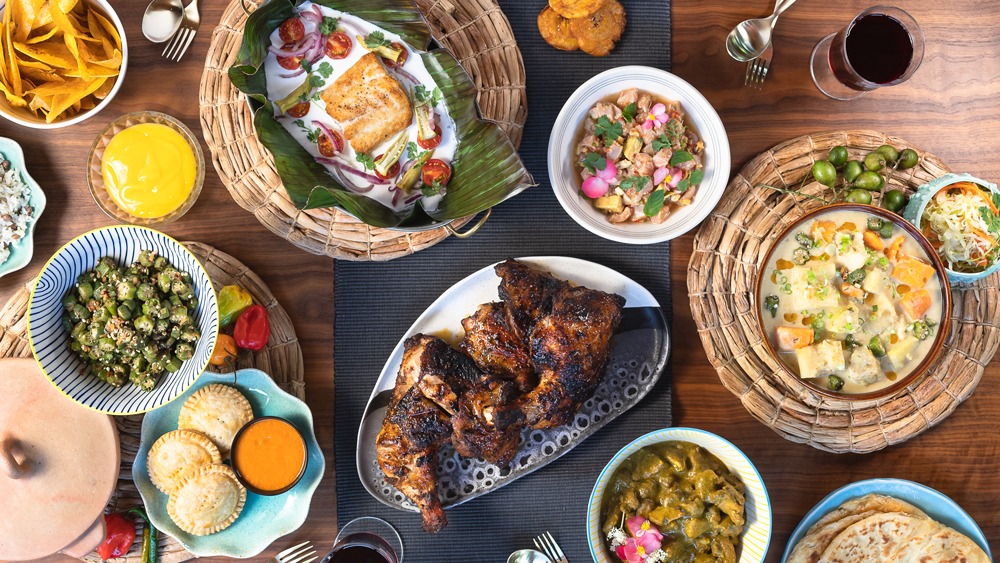The native of Guyana is drawing inspiration from across the region for his new Austin restaurant.
When Tavel Bristol-Joseph moved to Austin in 2015, the first thing he did was seek out a Caribbean spot for a plate of sweet plantains and jerk chicken. But the chef, who had grown up in Guyana, could only find a couple of food trucks serving the kinds of dishes he craved.
“Subconsciously, that made me feel like I, my culture, wasn’t part of the community,” he said. “I had this emptiness in a sense. The food that I know is not on the level, is not given the same respect as other cuisines.”
No matter, though. He was only in town for a bit, helping his friend Kevin Fink open a little restaurant called Emmer & Rye.
Six years later, after forming the Emmer & Rye Restaurant Group with Fink, opening four more highly acclaimed, distinct restaurants in the city (Hestia, Kalimotxo, Henbit, and TLV), and being named one of Food & Wine’s Best New Chefs of 2020, Bristol-Joseph has accepted that he isn’t leaving Texas anytime soon. And he’s finally ready to address that blind spot in the city’s food scene that’s gnawed at him from the start.
“I thought, the next person that moves to Austin, they should never feel the way I felt,” he said. “I don’t want to sit back anymore and say we’re (Afro-Caribbeans) not represented. I want to represent our food in the best way I can. So, whatever I need to do to create a space where people feel welcome and feel like a part of the community, that’s what I’m doing to do.”
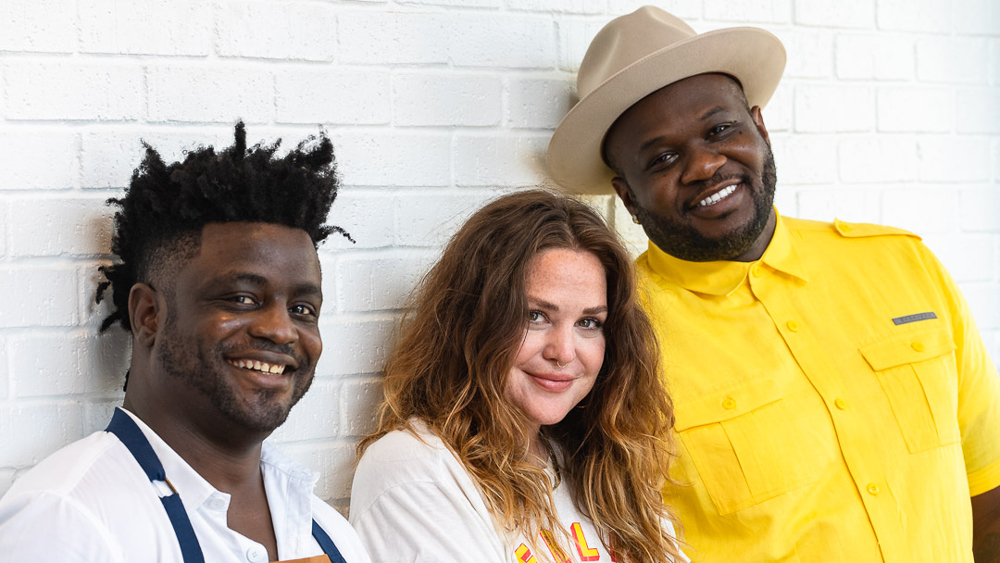
Harvard Aninye, Kate Houser and Tavel Bristol-Joseph.
Photo: courtesy Canje
Last week, Bristol-Joseph opened his passion project, Canje, on the east side of Austin. Named for the national bird of Guyana, a pheasant, Canje’s cuisine does not remain tethered to the mainland; it flits around the region, island hopping from Puerto Rico to Jamaica, and then trailing the Afro-Caribbean diaspora to places like Brooklyn and now, Austin.
“I knew that we were doing something important when we decided to open this restaurant,” he said. “But it is bigger than what we thought it was going to be. The reception has been incredible. People are getting emotional eating and talking about when they were in Trinidad or when they were in Belize, and how important it is that this restaurant and this food is available to them here.”
Bristol-Joseph says that while many of the cuisines in the region overlap in terms of ingredients, cooking techniques stand out. For example, while ceviche is common in countries like Puerto Rico, he says, Guyanese people wouldn’t dare eat raw fish. Dishes at Canje also emphasize the influence of colonial powers like India, China and France in the region.
“I really think that by showcasing more diversity in food, it opens people’s eyes,” he said. “And then we are here, we’re sitting at the same table in the same restaurant, eating the same food, sharing, talking, communicating. That’s important.”
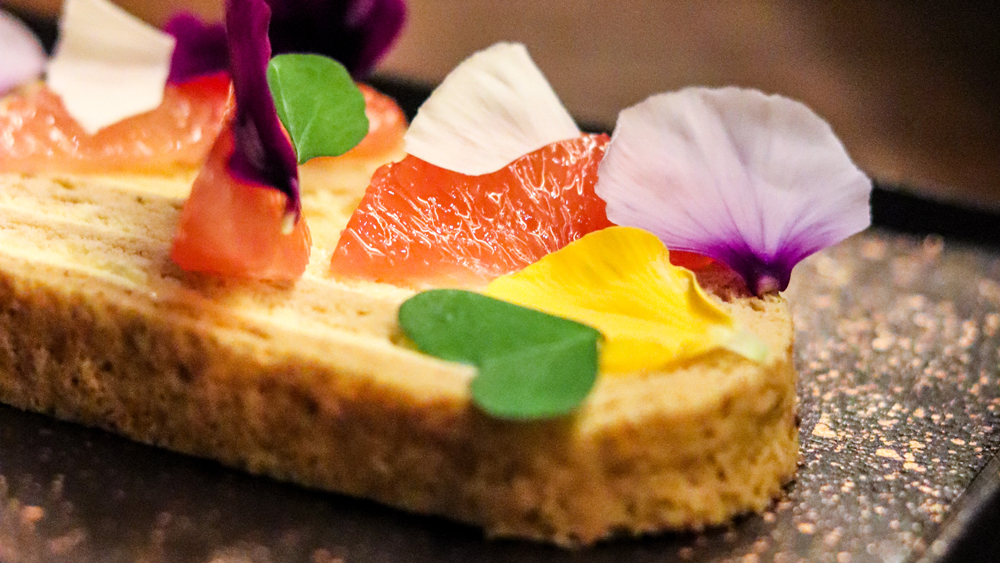
Bristol-Joseph created the desserts for restaurants like Hestia, our Best Restaurant of 2020.
For appetizers, the menu offers snacks like plantain chips served with mango hot sauce and pork fat mayo-ketchup for dipping; green banana escabeche with star fruit and onions; and Bacalaíto, a Puerto Rican fritter made from salt fish and potatoes, sauced with mojo roho. Mains include pork lechon, curry wagyu beef, jerk chicken rubbed with house-aged spices and a wild boar pepper pot.
And for dessert, the chef’s specialty, you can find passion fruit flan with a cornmeal sablée; guava, coconut and roasted white chocolate tres leches; and black cake with cream cheese frosting.
Each dish has a special meaning to Bristol-Joseph. Guyanese black cake, for example, is scarcely recognized outside of its home country. This celebratory, rum-meets-fruit-meets-pound cake can take up to a year to make. Typically, the elders of a family soak the main ingredients—star fruit, hibiscus, and melon skins, for example—in rum and red wine for months before preparing the dessert.
The fruit in Canje’s black cake has been fermenting for six months.
“It represents longevity because it takes so long to make,” he said. “It has a really deep meaning, culturally, and for me, it’s important to put [those kinds of dishes] on our menu. I want people to ask questions about it. I wanted people to have something special all day, every day.”
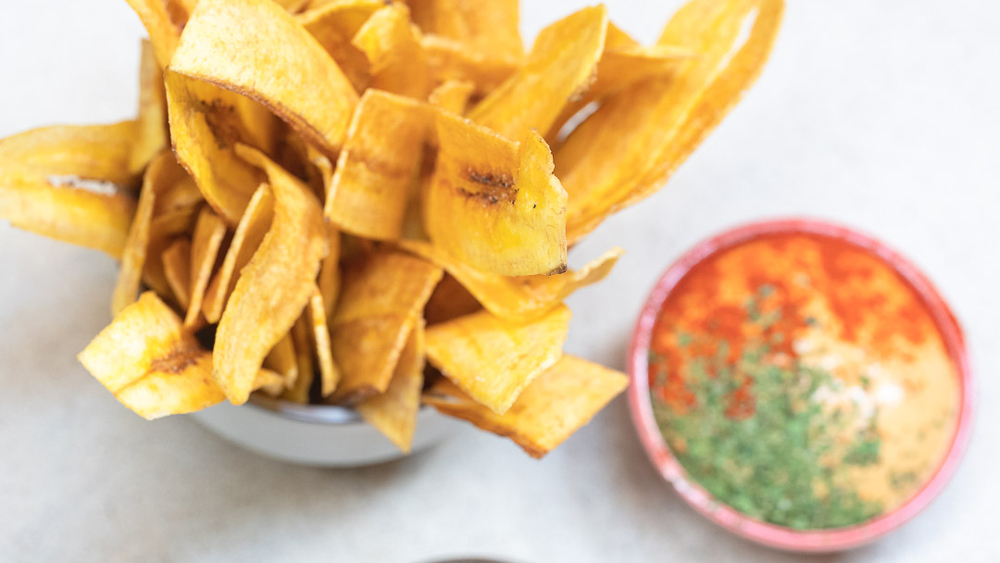
Plantain chips.
Photo: courtesy Canje
Bristol-Joseph grew up in the tropical Georgetown, Guyana, and majored in home economics in school. At 17, he moved to New York to be with his mother and pursue his dream of becoming a professional basketball player. That, well, didn’t work out, so he went to culinary school and excelled in the pastry program. He ate his way across the city, trying Italian food, strawberries, Thai food, apples and many other things for the very first time.
He then dedicated his career to pastries, primarily the European kind he was taught to immortalize in his education. He worked as a pastry chef for major restaurant groups in New York and Arizona, where he met his business partner, Fink—the one who convinced him to move to Texas.
Canje is the first restaurant where Bristol-Joseph will serve as executive chef. He took his team on a trip to Guyana before the opening.
“The challenge is we’re asking chefs who have never cooked Caribbean food to create and cook Caribbean food,” Bristol-Joseph said. “There’s flavor profiles there that if you’re not familiar with, you’re going to miss.”
Bristol-Joseph also had to learn the language of the kitchen. For example, he assumed they could build a beef curry in a big pot, cook it down to the right thickness and then dish it out when it was ordered. But in a restaurant environment, if they would have left a big pot bubbling on the stove all night, the product wouldn’t have been consistent. The vegetables and the meat would have broken down to mush by the end of the night. So, he broke the curry apart and the cooks bring everything together to serve.
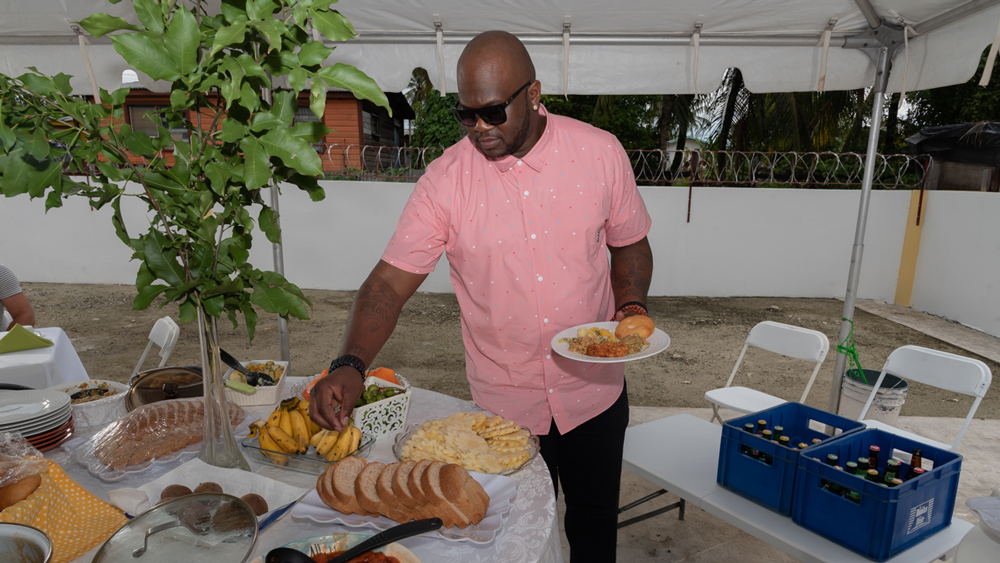
Bristol-Joseph and team traveled to Guyana for research ahead of opening.
Photo: courtesy Canje
“Tasting was also a big challenge,” he said. “It’s very technical for professional chefs. They’d say oh, it has a beautiful acidity, it’s there. I’d be like, eh … For me, it’s more of an emotional thing. Ask a grandmother and they’d say it needs a little more love. How do I communicate that?”
His uncle, an investor in the business, has already visited and approved; his mother and the rest of his family will make the trip in November.
“My uncle was just so proud and blown away and excited,” he said. “He was like, ‘I’ve never had this food like this before.’ That gave me so much joy.
“Last night I had two older couples and they were true Guyanese. They were talking about how amazing it was that we had pepper pots on the menu. And they made sure to try the black cake. It was really cool to see the people that I didn’t even know existed in Austin, coming out and being a part of this. I’m so happy and proud to have a space that can say, this is a representation of me and my culture.”
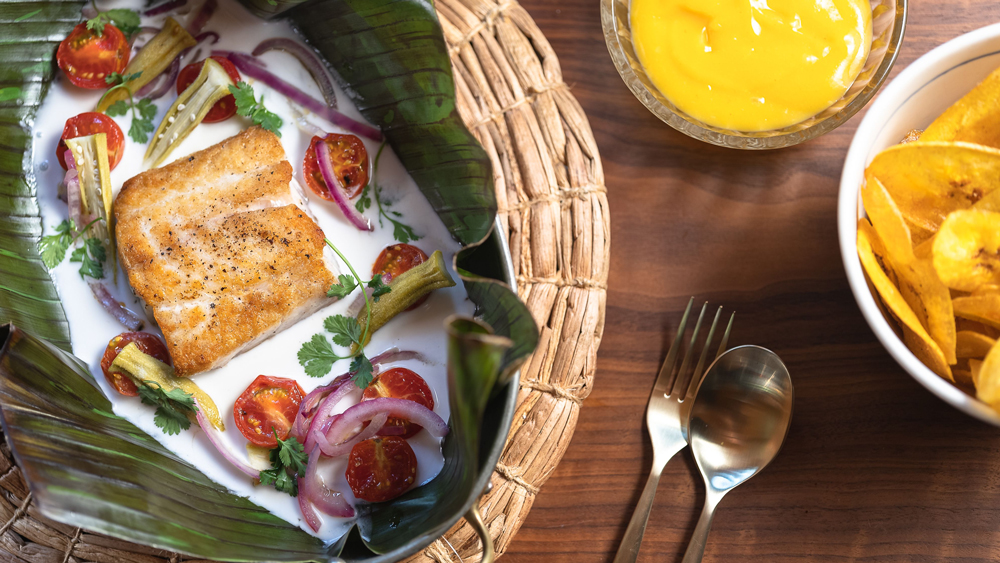
Seared Red Snapper over Coconut Broth with Okra, Cherry Tomatoes, Onions, Cilantro, GInger, Lemongrass
Photo: courtesy Canje
He envisions the menu evolving, one day showcasing dishes from countries like Martinique, Haiti or Curaçao, based on input from his chefs. Some of them have Afro-Caribbean backgrounds—they grew up in Dominican, Puerto Rican, Nigerian or Mexican homes.
“We’re going to touch as many islands as we can in the most genuine, natural way,” he said. “The staff is going to help me with that a lot. I’m all ears. I’m not going to act like I am an expert in Caribbean food, because I’m totally not. By saying there’s things that you don’t know, it opens up the doors for other creative minds to excel. So, I’m very excited to see where this journey goes.”

